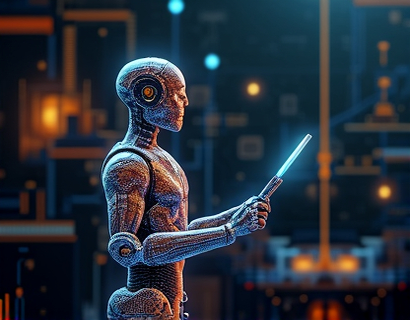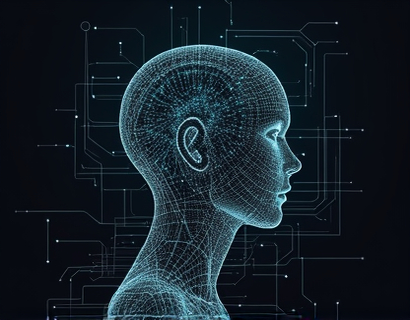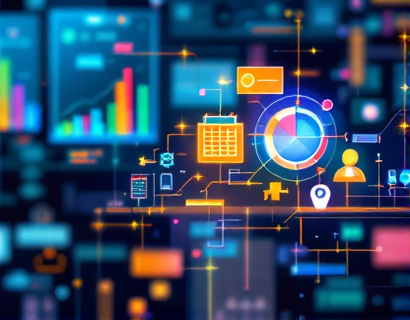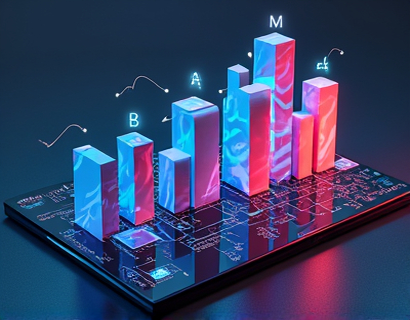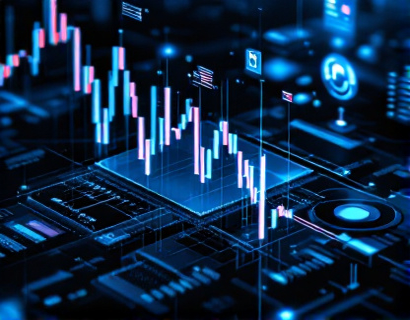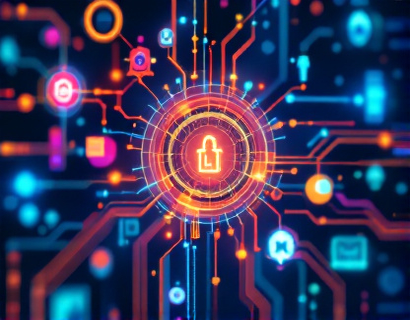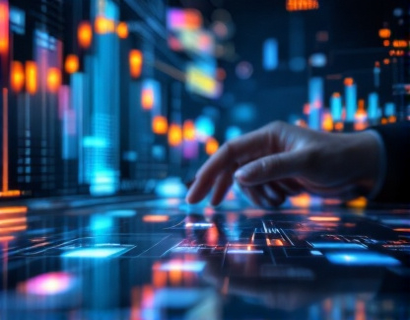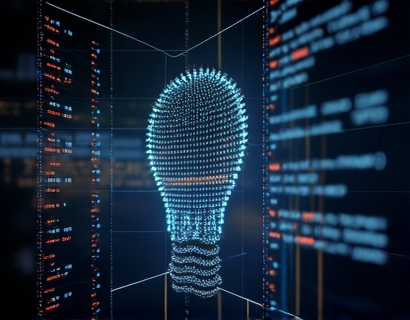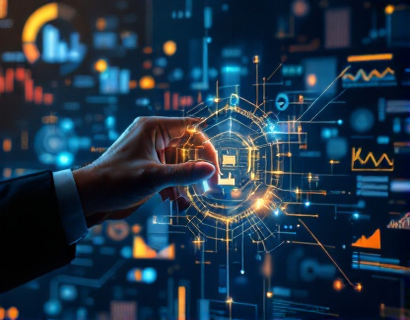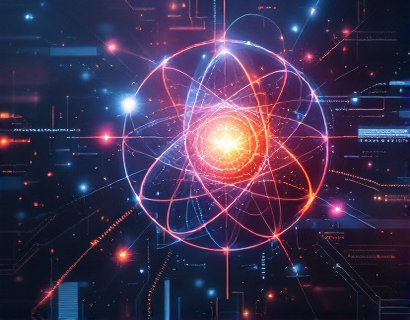Unlocking Digital Transformation: Leveraging AI and Crypto for Next-Gen Innovation
The digital landscape is evolving at an unprecedented pace, driven by the convergence of artificial intelligence (AI) and cryptocurrency technologies. This synergy is not just a trend but a fundamental shift that promises to unlock new levels of efficiency, security, and innovation. By harnessing the power of blockchain and machine learning, businesses and individuals can redefine industry standards and gain a competitive edge in the rapidly advancing digital realm.
At the heart of this transformation is blockchain technology, a decentralized ledger system that ensures transparency, immutability, and security. Blockchain's inherent characteristics make it an ideal foundation for building trust in digital transactions and interactions. When combined with AI, which excels in processing vast amounts of data to uncover patterns and make predictions, the potential for innovation becomes immense.
Blockchain: The Backbone of Trust and Security
Blockchain technology operates on a network of nodes that validate and record transactions in blocks, creating a chain of data that is nearly impossible to alter without consensus. This decentralized nature eliminates the need for intermediaries, reducing costs and increasing efficiency. In the context of digital transformation, blockchain serves as a robust framework for secure and transparent operations.
One of the most significant advantages of blockchain is its ability to enhance data integrity. Each transaction is cryptographically secured and linked to the previous one, forming an unbreakable chain. This feature is particularly valuable in industries such as finance, supply chain, and healthcare, where data accuracy and security are paramount. By leveraging blockchain, organizations can ensure that their data is tamper-proof and verifiable, fostering trust among stakeholders.
AI: The Catalyst for Intelligent Automation
Artificial intelligence, on the other hand, brings the power of machine learning and cognitive computing to the table. AI systems can analyze complex data sets, identify patterns, and make decisions with minimal human intervention. This capability is revolutionizing various sectors, from healthcare and finance to manufacturing and retail. By automating routine tasks and providing insights through data analysis, AI is driving productivity and innovation.
Machine learning, a subset of AI, enables systems to learn from data without being explicitly programmed. This learning process allows AI to improve its performance over time, making it an invaluable tool for predictive analytics, fraud detection, and personalized customer experiences. When integrated with blockchain, AI can process and verify transactions more efficiently, further enhancing the security and reliability of digital systems.
Synergy Between Blockchain and AI
The true power of digital transformation emerges when blockchain and AI are combined. This synergy creates a synergistic effect that amplifies the strengths of both technologies. For instance, AI can optimize blockchain networks by improving consensus mechanisms, reducing energy consumption, and enhancing scalability. Conversely, blockchain provides a secure and transparent environment for AI models to operate, ensuring that data integrity is maintained throughout the learning and decision-making processes.
One notable application of this synergy is in smart contracts, self-executing contracts with the terms directly written into code. AI can enhance smart contracts by enabling more complex logic and dynamic decision-making based on real-time data. This combination not only streamlines processes but also reduces the risk of errors and fraud, making transactions more reliable and efficient.
Enhancing Security Through AI and Blockchain
Security is a critical concern in the digital age, and the integration of AI and blockchain offers robust solutions. AI can detect and respond to security threats in real-time, analyzing patterns and anomalies to prevent breaches. Blockchain's immutable ledger ensures that once a transaction is recorded, it cannot be altered, providing an additional layer of security.
For example, in the financial sector, AI-powered systems can monitor transactions for suspicious activity and automatically trigger alerts or block transactions that violate predefined rules. When these systems are built on a blockchain, the transparency and immutability of the ledger ensure that all actions are traceable and verifiable, further strengthening the security framework.
Driving Innovation with AI and Blockchain
The combination of AI and blockchain is not only about enhancing existing processes but also about driving entirely new innovations. This technological duality opens up new possibilities in areas such as decentralized finance (DeFi), supply chain management, and digital identity verification.
In decentralized finance, AI and blockchain are revolutionizing the way financial services are delivered. DeFi platforms use smart contracts to provide lending, borrowing, and trading services without traditional financial intermediaries. AI can optimize these platforms by predicting market trends, managing risks, and personalizing financial products for users. The transparency and security of blockchain ensure that all transactions are fair and transparent, building trust among participants.
Supply chain management is another area where AI and blockchain can make a significant impact. By tracking products from origin to destination on a blockchain, companies can ensure the authenticity and quality of goods. AI can analyze this data to optimize logistics, predict demand, and identify bottlenecks, leading to more efficient and resilient supply chains. This combination not only reduces costs but also enhances customer satisfaction by providing transparency and traceability.
Personalized Experiences and Data Privacy
AI and blockchain together can also transform how businesses interact with customers, offering personalized experiences while maintaining data privacy. Blockchain-based identity verification systems can ensure that user data is secure and controlled by the individual. AI can then use this verified data to deliver tailored recommendations, services, and content without compromising privacy.
For instance, in the retail sector, a blockchain-based digital identity can authenticate a customer's identity and preferences, allowing AI to provide personalized shopping experiences. This approach not only enhances customer satisfaction but also complies with data protection regulations, such as GDPR, by giving users more control over their data.
Challenges and Considerations
While the potential of AI and blockchain is vast, there are challenges that need to be addressed to fully realize their benefits. One of the primary concerns is scalability. Blockchain networks, particularly public ones like Bitcoin and Ethereum, can face performance issues as the number of transactions increases. AI can help mitigate this by optimizing consensus algorithms and improving network efficiency, but ongoing research and development are essential.
Another challenge is the regulatory landscape. The intersection of AI and blockchain operates in a relatively uncharted territory, and regulatory frameworks are still evolving. Organizations must navigate these regulations carefully to ensure compliance while innovating. Collaboration between tech companies, regulators, and policymakers is crucial to create a balanced and supportive environment for digital transformation.
Building a Future-Ready Infrastructure
To harness the full potential of AI and blockchain, organizations need to invest in building a future-ready infrastructure. This includes upgrading IT systems, adopting cloud-based solutions, and fostering a culture of innovation and continuous learning. Employees should be trained in the latest technologies to effectively integrate AI and blockchain into their workflows.
Partnerships with tech innovators and early adopters can also accelerate this process. By collaborating with experts in AI and blockchain, organizations can gain insights into best practices, emerging trends, and potential applications. This collaborative approach not only speeds up innovation but also ensures that solutions are tailored to specific industry needs.
Conclusion
The convergence of AI and blockchain represents a paradigm shift in the digital landscape, offering unprecedented opportunities for efficiency, security, and innovation. By leveraging these technologies, organizations can transform their operations, drive growth, and redefine industry standards. As the digital world continues to evolve, embracing this synergy will be essential for staying competitive and relevant in the future.








